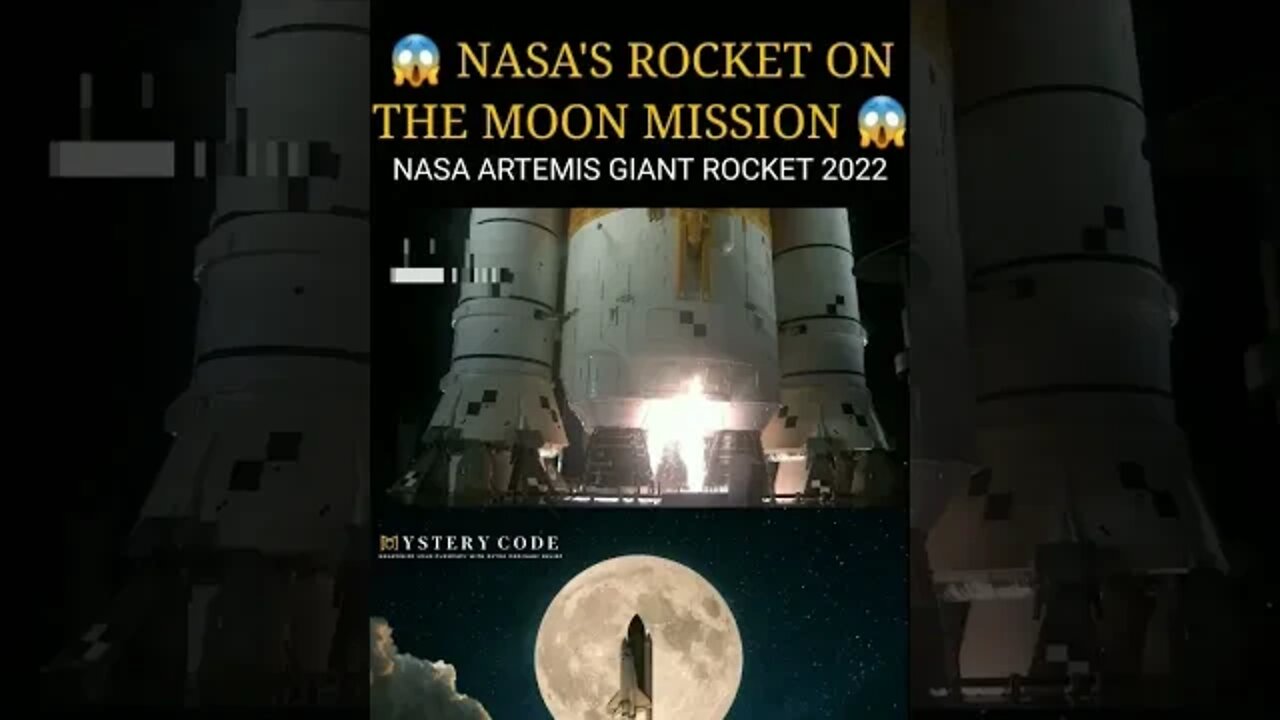Premium Only Content

NASA’s return to the moon Artemis I has (finally) launched
After many failed starts and weather delays, NASA's most powerful rocket ever launched successfully. The unmanned Orion spacecraft is presently on a four-week mission.
On November 16, at 1:47 a.m. ET, the most powerful rocket ever fired tore through the thick air of the Florida night. The 30-story Space Launch System (SLS) rocketed aloft atop a blindingly brilliant exhaust flame that dazzled the thousands of onlookers.
Thunder followed the lightning. More than three miles distant, shockwaves from the rocket's 8.8 million pounds of thrust—equivalent to 31 jumbo jets—rattled viewers' chests. The crackling rocket, accelerating to more than 17,000 miles per hour, was just a pinprick in the distance less than eight minutes after liftoff.
"I love it when it simply turns into a star," NASA astronaut Christina Koch screamed as she stood on the grass in front of the launch complex's countdown clock. "Pretty great," remarked the space agency's top exploration scientist, Jacob Bleacher.
NASA's newest rocket launched the Orion spacecraft—a metallic gumdrop twice the size of a minivan—on the first leg of a four-week journey to the moon and back. Orion will now be carefully tested to certify the spacecraft for future crewed trips, with science experiments and equipment to monitor the journey.
"What you did today will inspire future generations," mission launch director Charlie Blackwell-Thompson addressed her crew immediately after liftoff. "The more difficult the climb, the greater the view." Tonight, we showed the Space Coast what a spectacular vista it is."
The unmanned Artemis I mission is an important milestone in NASA's drive to return people to the moon for the first time in more than 50 years. If all goes as planned, the first humans might land on the moon's surface as early as 2025, followed by a series of flights to establish a permanent presence. NASA has pledged that among the first astronauts sent to the surface would be the first woman and first person of color. "We're going back to the moon to live and learn before we go to Mars," NASA administrator Bill Nelson says. "That'll be the next big adventure."
A brand-new lunar program
The Artemis I launch marked a dramatic finish to the mission, which is expected to cost $93 billion through 2025 and has already had to overcome more than a decade of technical challenges, delays, and cost overruns in its quest to reach the moon.
A VIP-studded launch attempt on August 29, which included Vice President Kamala Harris, was canceled due to weather delays, a faulty temperature sensor, and a hydrogen fuel leak. Another effort in September resulted in significant hydrogen leakage that need repairs. Then came Hurricane Ian, a Category 4 storm that forced NASA to shut down in late September.
#nasarocket2022 #artemis #moonmission2022
-
 1:00
1:00
MindSet Code Ph
1 year ago $0.28 earned2023 Zombie Virus is Out be Aware
9341 -
 42:24
42:24
MYLUNCHBREAK CHANNEL PAGE
23 hours agoA Century Gone
148K128 -
 38:22
38:22
Stephen Gardner
16 hours ago🔥HOLD ON! The RUMORS about Kamala are TRUE...
189K530 -
 1:22:44
1:22:44
Michael Franzese
1 day agoWill Trump’s Win Finally Convince Democrats to Stop The Woke Nonsense??
173K146 -
 8:27:07
8:27:07
MDGgamin
20 hours ago🔴LIVE- Rumble Gaming To The MOON - Variety of Games & Chatting - #RumbleTakeover
151K5 -
 27:24
27:24
Mr. Build It
5 days agoDECK DISASTER! How We Fixed a Botched Build
116K16 -
 26:58
26:58
barstoolsports
21 hours agoZach Bryan Blocks All of Barstool | Stool Scenes
126K17 -
 1:06:44
1:06:44
Talk Nerdy 2 Us
1 day ago🔥 Hackers vs. The World: From Amazon breaches to FBI-confirmed Chinese telecom spying
116K22 -
 1:24:20
1:24:20
Vigilant News Network
1 day agoJoe Rogan Drops Shocking Election Claim | The Daily Dose
178K202 -
 1:10:18
1:10:18
FamilyFriendlyGaming
1 day ago $19.47 earnedCat Quest III Episode 2
143K